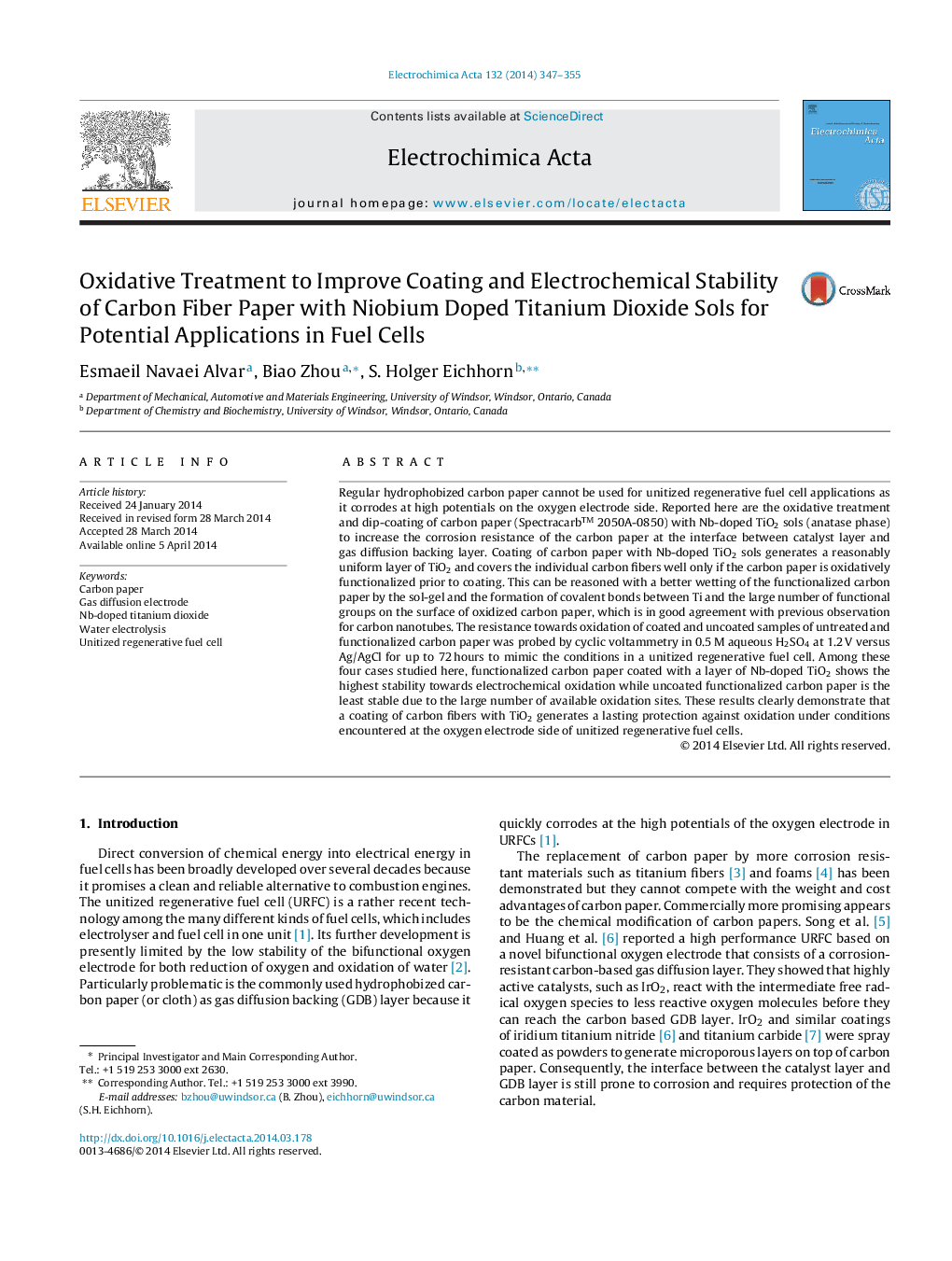| کد مقاله | کد نشریه | سال انتشار | مقاله انگلیسی | نسخه تمام متن |
|---|---|---|---|---|
| 185785 | 459603 | 2014 | 9 صفحه PDF | دانلود رایگان |
• Solution coating of metal oxide layer directly onto carbon paper.
• Most uniform Metal oxide coating on functionalized carbon paper.
• Highest electrochemical stability for metal oxide coated functionalized carbon paper.
Regular hydrophobized carbon paper cannot be used for unitized regenerative fuel cell applications as it corrodes at high potentials on the oxygen electrode side. Reported here are the oxidative treatment and dip-coating of carbon paper (Spectracarb™ 2050A-0850) with Nb-doped TiO2 sols (anatase phase) to increase the corrosion resistance of the carbon paper at the interface between catalyst layer and gas diffusion backing layer. Coating of carbon paper with Nb-doped TiO2 sols generates a reasonably uniform layer of TiO2 and covers the individual carbon fibers well only if the carbon paper is oxidatively functionalized prior to coating. This can be reasoned with a better wetting of the functionalized carbon paper by the sol-gel and the formation of covalent bonds between Ti and the large number of functional groups on the surface of oxidized carbon paper, which is in good agreement with previous observation for carbon nanotubes. The resistance towards oxidation of coated and uncoated samples of untreated and functionalized carbon paper was probed by cyclic voltammetry in 0.5 M aqueous H2SO4 at 1.2 V versus Ag/AgCl for up to 72 hours to mimic the conditions in a unitized regenerative fuel cell. Among these four cases studied here, functionalized carbon paper coated with a layer of Nb-doped TiO2 shows the highest stability towards electrochemical oxidation while uncoated functionalized carbon paper is the least stable due to the large number of available oxidation sites. These results clearly demonstrate that a coating of carbon fibers with TiO2 generates a lasting protection against oxidation under conditions encountered at the oxygen electrode side of unitized regenerative fuel cells.
Figure optionsDownload as PowerPoint slide
Journal: Electrochimica Acta - Volume 132, 20 June 2014, Pages 347–355
